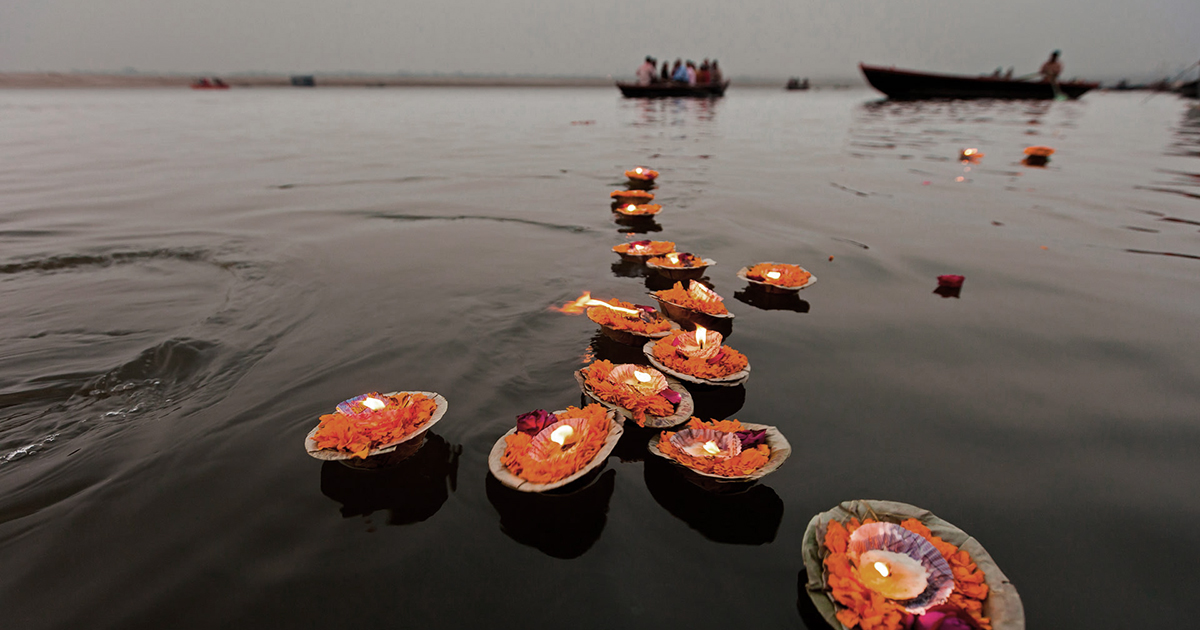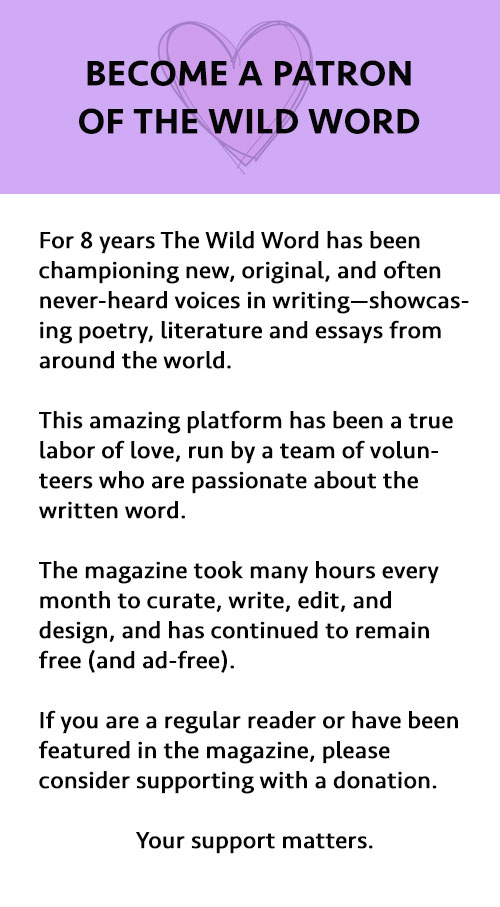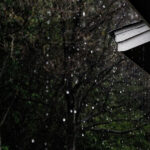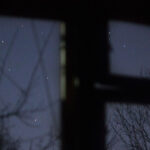EVIE GROCH
★ ★ ★ ★
FLASH FICTION

‘Fire and Water’
In the early hours of the evening, our little boat, its obedient mini-motor propelling us along the shore of the Ganges, heads toward where the cremations take place as we requested of our boatman. The young man steering the boat is in his teens, lean, dark, and hungry-looking, but he has a steady hand, and we meet little water resistance. His job is to guide the boat along slowly and gently to a place where we can best view the ceremonies. We are confident he knows what he is doing, since his agility convinces us he has been doing this a while. We know where we are going, and a bit of our discomfort shows. I am anxious. How much will I see? How much can I stand to see?
Soon we are surrounded by other boats, all converging on the waters facing the ritual funereal altars. The boats, like work horses coming back to the ranch for feeding time, they know exactly what to do and how to flow together so as not to bump the other crafts too strongly. Families fill some boats; curious tourists like us fill the rest, all of us silently and respectfully taking part in the celebrations of the end of life. We pass by the bathers where the water meets the shore. Mostly they are men, stripped down to the waist and pantless. They are cleansing themselves in the sacred life source. We try not to stare, but a few among us surreptitiously aim their cellphones at the bathers and click away. Shame overcomes me as an American, but I refuse to lecture or scold, so I look away silently. I still have another week to travel with them on this tour of Northern India.
The crafts nudge one another as they touch, all converging into a narrow river lane. No one seems to mind, no one gets angry. Riders step from one boat to another to scope out an acceptable view, jockeying like people at an event at a sports arena. A few Indian passengers make a picnic of it, bringing naan, paneer, fruit, and drink, like those who spread their devotional picnics on gravesites on Día de los Muertos (The Day of the Dead) in Latin families.
The Indian city of Varanasi honors the dead like no other place I’ve seen. One could mistake the event for a festive fireworks display. We hear chanting, drumbeats, music, and trace these sounds to a seated group of musicians on a platform at the water’s edge. Accompanying the music is a mixture of wails and songs emanating from priests on a platform slightly above them, but also near the water’s edge.
Our eyes focus on the movement, on the white-robed priests under lit arches swaying in unison energetically to the mystical rhythms.
The backlit buildings and mansions lining the riverbed and sloping gently uphill blind us with high use of wattage as the edifices duplicate themselves in the ripples of the water, giving the illusion that parts of them are fluid and flowing along with us down the river. They’ve been painted with outer coats of bright reds and oranges, but pops of blue, green, and white appear randomly as trim.
The shoreline is alive with color and form: hues of purple light illuminating stairways leading down to the water, lime green walls and roofs, neutral-toned narrow walkways leading into the heights, low billows of gray smoke puffing out from recently extinguished pyres, multicolored banners hanging from columns, and red hot bonfires. The ambience is hyper normal and slightly magical. These images are seared into our memories.
Corpses wrapped in white shrouds line up for their final send-off, first by fire, then by water, as their remains leave the pyre grate and slide into the Ganges for eternal safekeeping. We are asked not to zoom in with our cameras on the people in grief performing these rituals, but not all of us listen.
The profiles of families in shadows on the boats glow softly in the light of the candles they carry. The solemnity is stark and holy, and we stand in awe. The silence is powerful, but soothing at the same time.
Soon lights dim, and ceremonies come to a close. We honor the moment by taking part in the candle ritual as we receive concave flower petals, each holding a lit candle stub. We hold them for a quiet moment and set them on the water, watching them float away. Soon they are tiny specks of light, stars in a dark aspic of salinity.

Evie Groch’s opinion pieces, humor, poems, short stories, word challenges, and other articles have been widely published in the New York Times, The San Francisco Chronicle, The Contra Costa Times, Games Magazine, anthologies, and many online venues. Her short stories, poems, and memoir pieces have won her recognition and awards. Travel, language, justice and immigration are special themes for her work.
























0 Comments